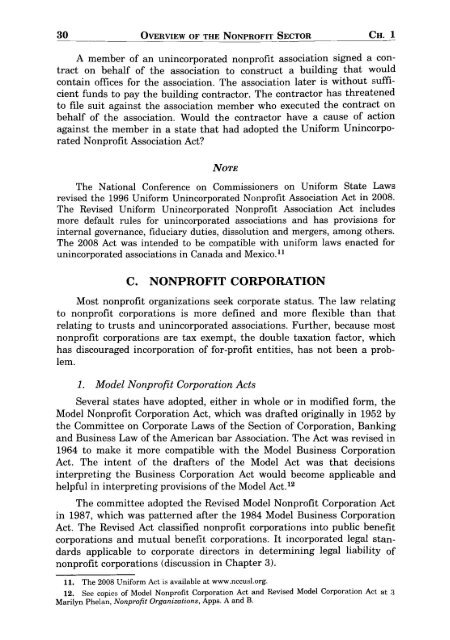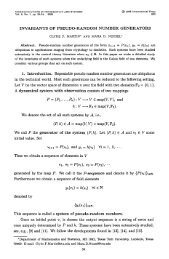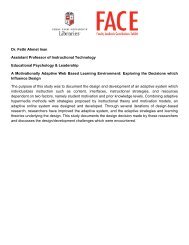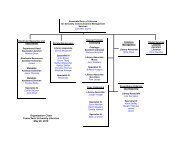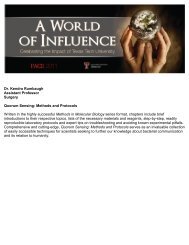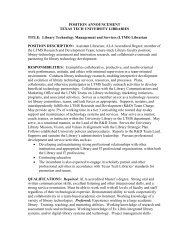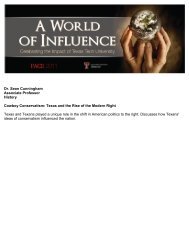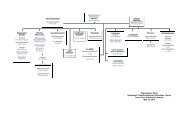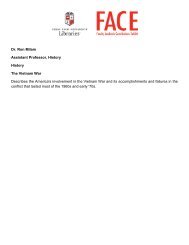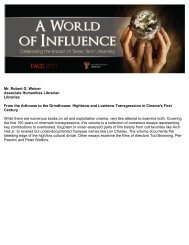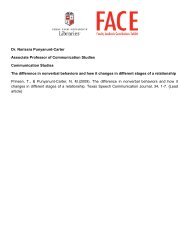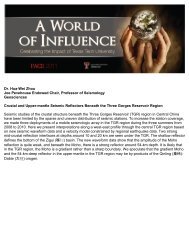Nonprofit Organizations Law and Policy Third Edition - Libraries ...
Nonprofit Organizations Law and Policy Third Edition - Libraries ...
Nonprofit Organizations Law and Policy Third Edition - Libraries ...
Create successful ePaper yourself
Turn your PDF publications into a flip-book with our unique Google optimized e-Paper software.
30 OVERVIEW OF THE NONPROFIT SECTOR CH. 1<br />
A member of an unincorporated nonprofit association signed a contract<br />
on behalf of the association to construct a building that would<br />
contain offices for the association. The association later is without sufficient<br />
funds to pay the building contractor. The contractor has threatened<br />
to file suit against the association member who executed the contract on<br />
behalf of the association. Would the contractor have a cause of action<br />
against the member in a state that had adopted the Uniform Unincorporated<br />
<strong>Nonprofit</strong> Association Act?<br />
NOTE<br />
The National Conference on Commissioners on Uniform State <strong>Law</strong>s<br />
revised the 1996 Uniform Unincorporated <strong>Nonprofit</strong> Association Act in 2008.<br />
The Revised Uniform Unincorporated <strong>Nonprofit</strong> Association Act includes<br />
more default rules for unincorporated associations <strong>and</strong> has provisions for<br />
internal governance, fiduciary duties, dissolution <strong>and</strong> mergers, among others.<br />
The 2008 Act was intended to be compatible with uniform laws enacted for<br />
unincorporated associations in Canada <strong>and</strong> Mexico. II<br />
C. NONPROFIT CORPORATION<br />
Most nonprofit organizations seek corporate status. The law relating<br />
to nonprofit corporations is more defined <strong>and</strong> more flexible than that<br />
relating to trusts <strong>and</strong> unincorporated associations. Further, because most<br />
nonprofit corporations are tax exempt, the double taxation factor, which<br />
has discouraged incorporation of for-profit entities, has not been a problem.<br />
1. Model <strong>Nonprofit</strong> Corporation Acts<br />
Several states have adopted, either in whole or in modified form, the<br />
Model <strong>Nonprofit</strong> Corporation Act, which was drafted originally in 1952 by<br />
the Committee on Corporate <strong>Law</strong>s of the Section of Corporation, Banking<br />
<strong>and</strong> Business <strong>Law</strong> of the American bar Association. The Act was revised in<br />
1964 to make it more compatible with the Model Business Corporation<br />
Act. The intent of the drafters of the Model Act was that decisions<br />
interpreting the Business Corporation Act would become applicable <strong>and</strong><br />
helpful in interpreting provisions of the Model Act. I2<br />
The committee adopted the Revised Model <strong>Nonprofit</strong> Corporation Act<br />
in 1987, which was patterned after the 1984 Model Business Corporation<br />
Act. The Revised Act classified nonprofit corporations into public benefit<br />
corporations <strong>and</strong> mutual benefit corporations. It incorporated legal st<strong>and</strong>ards<br />
applicable to corporate directors in determining legal liability of<br />
nonprofit corporations (discussion in Chapter 3).<br />
11. The 2008 Uniform Act is available at www.nccusl.org.<br />
12. See copies of Model <strong>Nonprofit</strong> Corporation Act <strong>and</strong> Revised Model Corporation Act at :3<br />
Marilyn Phelan, <strong>Nonprofit</strong> <strong>Organizations</strong>, Apps. A <strong>and</strong> B.


